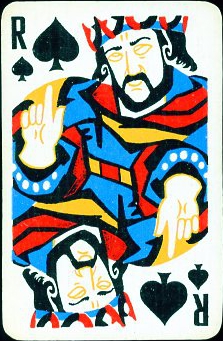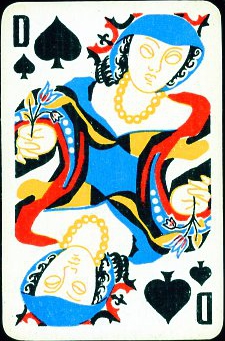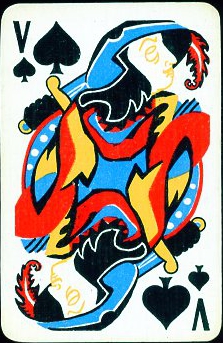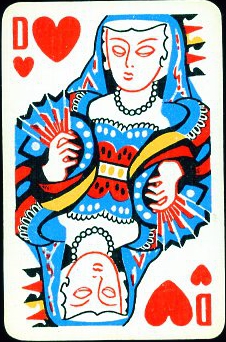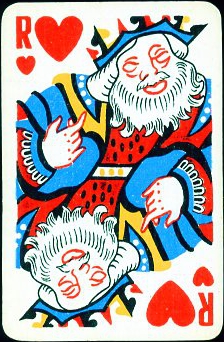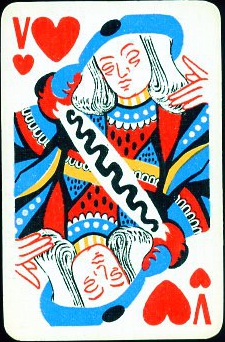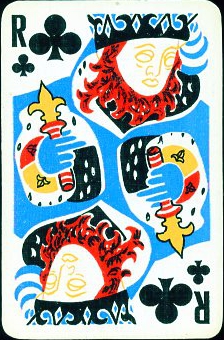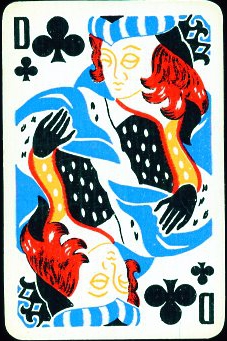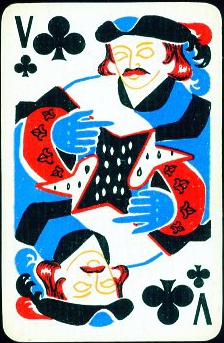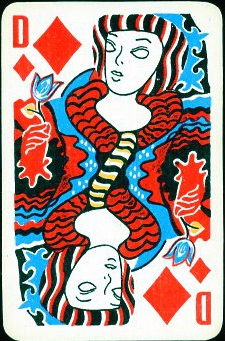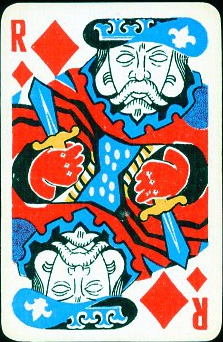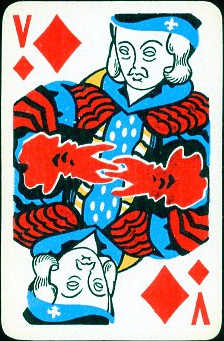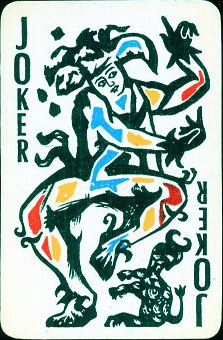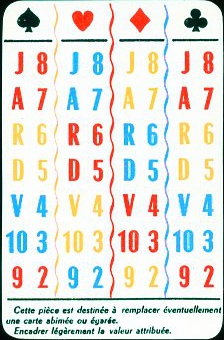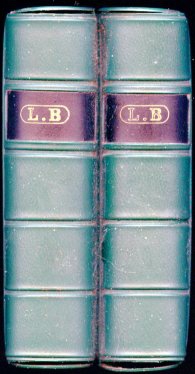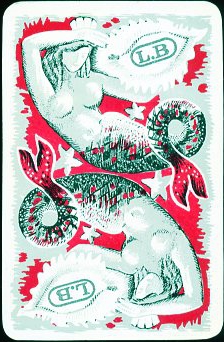June
2022
|
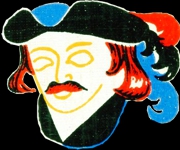 |
| It was
the busiest month of the year so far. It started with the collectors day
at the museum in Turnhout on the 4th and after that sales went on at the
Bargains section. I completed a sale to a collector who had asked me
about a deck that I couldn't find at that time. This week I stumbled
upon it and because it wasn't shown anywhere on this site yet and I
needed a deck for this spot badly...... here it is. |
But
after having scanned the necessary cards a problem arose. The sticker on the
holder had come off, so there was no reference number to find the appropriate
file card with info. I turned to the WWPCM and the WOPC sites, but that deck
wasn't found there. So now I can only tell what I know about it by heart and
that's not much. It's French, published for L.B (?) and it was designed by
Rudolf Kundera. For the rest I am as blind as these eyeless courts. Although I
think it was published around 1960, maker and exact year are unknown to me. And
who or what is this L.B? So, my fellow collectors, once more I ask you to help
me out and provide the requested info. Of course your name will be mentioned
here, when I add it to this page.
Rudolf
Kundera was a Czech artist, who was born there in Brünn in 1911, but has lived
in France since 1939. He was referred to the Art Academy in Prague by Alfons
Mucha in 1930. He finished his education there in 1936 and was offered a
scholarship in Rome. After his return to Czechoslovakia he fled the country
after WWII had started in 1939. He lived in Paris until the German occupation in
1942, when he went to the South of France and became part of the entourage of
countess Lily Pastré in Marseille. After the war he returned to Paris. He
married twice. First with the Dutch Maud Blankenburg in 1950, with whom he had 2
daughters, and in 1964 with Claude Favel, with whom he had 2 sons. During his
life he had some 50 expositions in different European cities and in the US. He's
known as a realistic painter and a colorist. This is not the only deck of cards
he has created. In 1963/64 he designed a deck for the Navigation Mixte, named
"Les
Divinités de la Mer" He died in 2005.
So
for now, enjoy these loosely designed courts in 3 colours and ponder a bit about
a reason for the eyeless faces.
No aces to show here: they are all as plain as can be.
The deck consists of 52 cards,
2 jokers and 2 extra cards.
BACK
TO PRESENT MONTH

